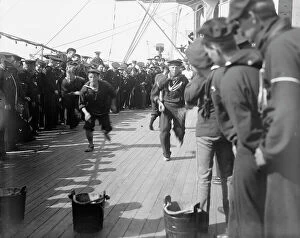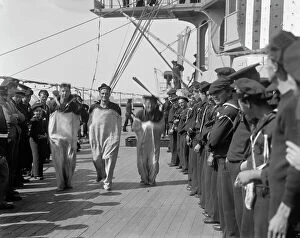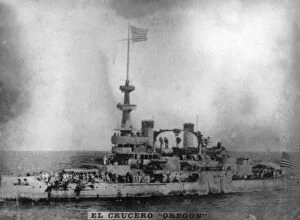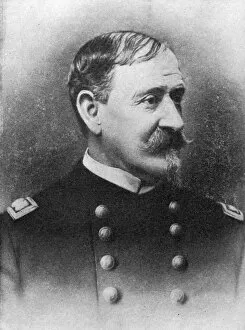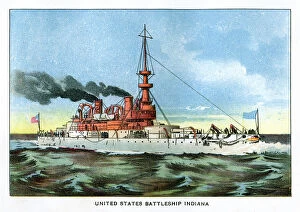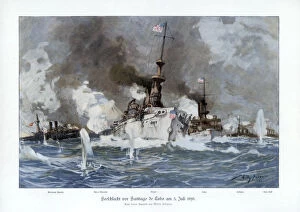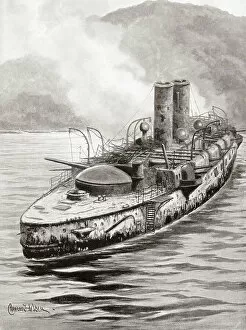Battle Of Santiago De Cuba Collection
"The Battle of Santiago de Cuba: A Clash of Naval Titans" In the early 1900s, amidst escalating tensions between the United States and Spain
All Professionally Made to Order for Quick Shipping
"The Battle of Santiago de Cuba: A Clash of Naval Titans" In the early 1900s, amidst escalating tensions between the United States and Spain, a historic battle unfolded off the coast of Santiago de Cuba. The stage was set with formidable warships that would forever etch their names in naval history. The US Battleship Iowa, an imposing vessel commissioned in 1898, stood as a symbol of American might. Its sleek design and state-of-the-art weaponry showcased America's growing naval prowess. Opposing it was the Spanish battleship Vesubio, dating back to 1898 but still formidable in its own right. Alongside it sailed the Viscaya, another Spanish battleship that exuded strength despite being from an earlier era. As Captain Evans commanded his ship with unwavering determination, he faced off against Admiral Cervera aboard his vessel. These two leaders embodied courage and strategic brilliance as they navigated through treacherous waters. Meanwhile, other renowned ships joined this epic confrontation. The Texas Battleship and Oregon Battleship raced towards Cuba to lend their support to the American cause. Their speed and power were unmatched during this era. Notably remembered is the sinking of the Merrimac—a daring act by Lieutenant Richmond Pearson Hobson who sought to block enemy vessels' path using his ship as a blockade runner. Though unsuccessful in its mission, this valiant effort demonstrated unparalleled bravery. Amidst all these events unfolded Winfield Scott Schley—an American admiral whose leadership skills shone brightly during this intense battle for supremacy at sea. The USS Indiana played a crucial role too—its presence commanding respect on both sides of the conflict. Artist W Rau captured its grandeur through intricate artwork that immortalized this legendary warship. Finally came "The Oregon's race for Cuba, " where speed became paramount as she rushed into action alongside her fellow American counterparts—their collective aim: victory over the Spanish fleet.







